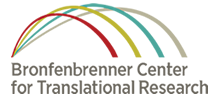The medical conditions we now call “autism spectrum disorders” were first identified and labeled in the late 1930s. This group of disorders result in communication difficulties, repetitive behaviors, sensory issues, and problems with social interaction. The medical community’s understanding of these disorders and the best ways to treat them is constantly evolving.
Last month, the American Academy of Pediatrics published a new clinical report on autism spectrum disorders that summarizes the body of evidence that has developed over the past 12 years.
The first notable fact in the report is that autism rates continue to rise: About one in every 59 children in the U.S. is diagnosed with an autism spectrum disorder, up from one in 88 children just eight years ago.
The report also offers updated guidelines about the best ways to diagnose autism spectrum disorders in children. Although autism disorders are neurological diseases, looking for certain behaviors in young children is often the best way to make an initial diagnosis. Children with autism spectrum disorders often have a hard time understanding the intent of another person, are less likely to make eye contact with others, and typically don’t engage in pretend play in the same ways as other children. They may have difficulty processing gestures and language.
About a quarter of children with autism experience a regression in language or social skills – that is, they lose abilities they once had learned – when they are between 18 and 24 months old, according to the report. Researchers don’t understand why this occurs.
These early warning signs are extremely important, the authors write, because there is clear evidence that beginning treatment early – even if a diagnosis is expected, but not confirmed – leads to better outcomes. As a result, the report recommends routine autism screening for all children in their pediatric well visits.
Some of the most effective interventions, the report finds, address specific autism behaviors and identifies triggers for them.
Behavioral interventions are “very, very important,” co-author Susan Levy said. The most intense intervention is Applied Behavioral Analysis (A.B.A.), a program that addresses specific behaviors, identifying triggers and antecedents and responding with rewards when a child behaves in the desired way. Data show interventions that teach both children and their families effective communication strategies are also effective. The evidence also indicates that diets that eliminate gluten or casein do not have a significant effect on symptoms or behaviors.
Additionally, the report underscores the importance of paying attention to medical conditions that often occur with autism spectrum disorders but can be treated separately, such as attention deficit hyperactivity disorder, intellectual disabilities, sleep problems, seizures, and anxiety. The evidence shows that when caregivers and medical professionals can address these other problems, it can improve children’s overall ability to function and quality of life.
Lastly, the report details how planning for adolescence and the transition to adulthood is important for people with autism spectrum disorders. Finding medical and behavioral health services, job skills development, community leisure opportunities, and residential supports can make an important difference in the lives of people with autism and their families.
The take-home message: The medical community is learning more about autism and how to best diagnose, treat, and support people with autism spectrum disorders.




Speak Your Mind